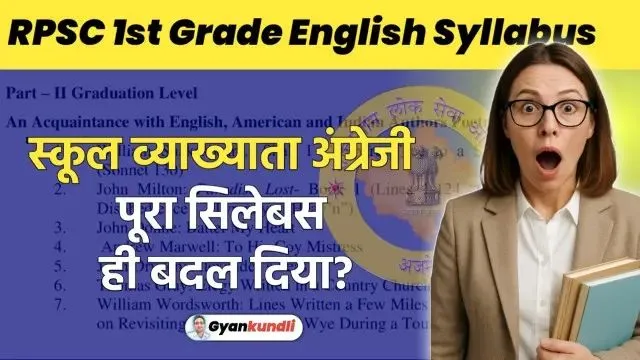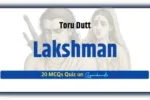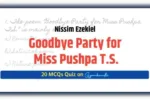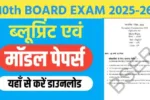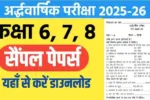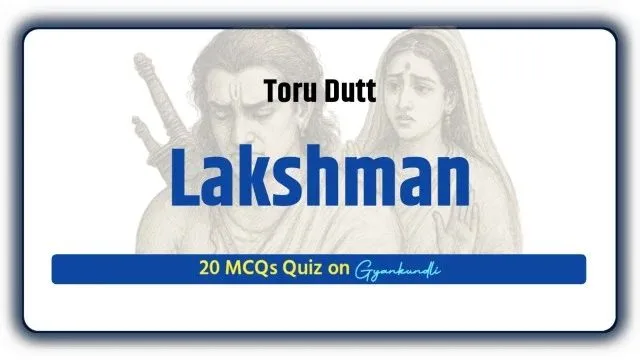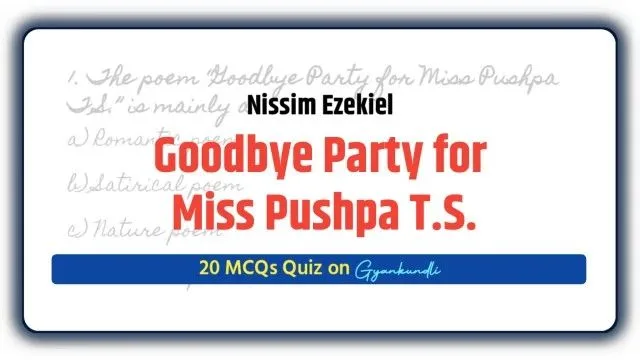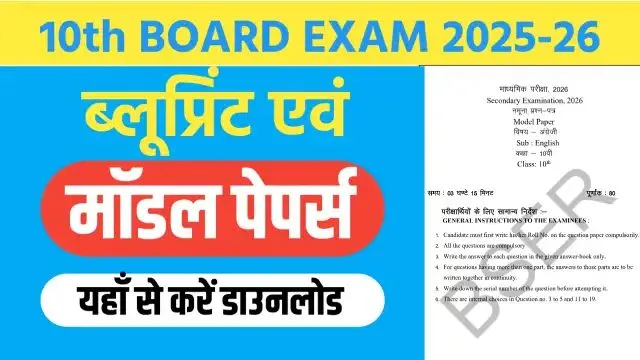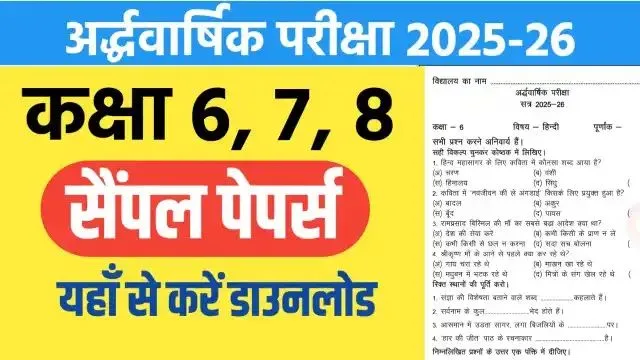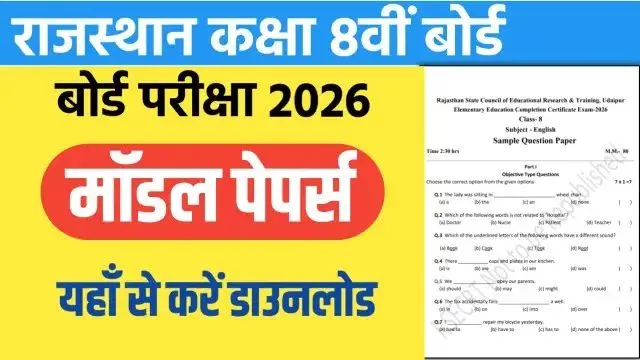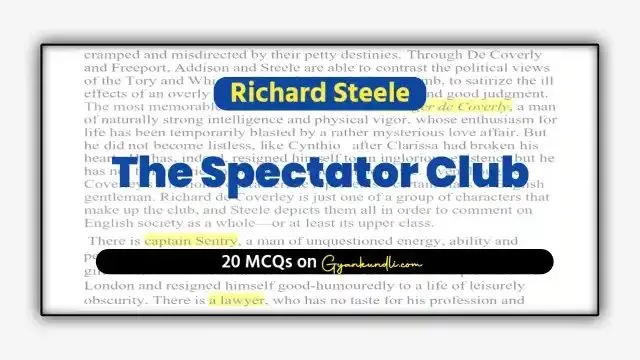The Rajasthan Public Service Commission (RPSC), Ajmer, released the new syllabus for School Lecturer English (Paper II) on 19 September 2025. This syllabus is designed to assess candidates’ comprehensive knowledge of English language, literature, and pedagogy across Senior Secondary, Graduation, and Post-Graduation levels, along with ICT integration in teaching.
In this article, we will:
-
Present the new syllabus exactly as it is.
-
Highlight the changes introduced compared to the previous syllabus.
New Syllabus (2025) for RPSC School Lecturer English
Part – I: Senior Secondary Level (Grammar and Usage)
-
Use of Articles and Determiners
-
Tenses
-
Conditional Sentences
-
Use of Prepositions
-
Modal Auxiliaries
-
Subordination and Coordination (Compound and Complex Sentences)
-
Transformation of Sentences
-
Affirmative, Negative, Interrogative and Imperative Sentences
-
Active and Passive Voice
-
Direct and Indirect Speech
-
-
Phrasal Verbs
-
Proverbs/Idiomatic Expressions
-
Phonetic Transcription and Word Stress
-
One Word Substitution
-
Synonyms and Antonyms
-
Basic Sentence Patterns
-
Clause/Phrase Analysis (in terms of SVOCA)
-
Reading Comprehension and Vocabulary
Part – II: Graduation Level
Poetry
-
William Shakespeare: Shall I Compare Thee to a Summer’s Day (Sonnet 130)
-
John Milton: Paradise Lost, Book 1 (Lines 1-124 “Of Mans First Disobedience … Tyranny of Heav’n”)
-
John Donne: Batter My Heart
-
Andrew Marwell: To His Coy Mistress
-
John Dryden: Alexander’s Feast
-
Thomas Gray: Elegy Written in a Country Churchyard
-
William Wordsworth: Lines Written a Few Miles Above Tintern Abbey on Revisiting the Banks of the Wye During a Tour, July 13, 1798
-
John Keats: Ode to a Nightingale
-
Robert Browning: Andrea Del Sarto
-
Matthew Arnold: Dover Beach
-
T. S. Eliot: The Hollow Men
-
W.B. Yeats: Sailing to Byzantium
-
Walt Whitman: Crossing Brooklyn Ferry
-
Robert Frost: After Apple Picking
-
Emily Dickinson: Because I Could not Stop for Death; I Heard a Fly Buzz
-
Rabindranath Tagore: Where the Mind is Without Fear
-
Sri Aurobindo: The Pilgrim of Night
-
Nissim Ezekiel: Goodbye Party for Miss Pushpa T.S
-
Toru Dutt: Lakshman
-
Vikram Seth: The Tale of Melon City
-
Syed Amanuddin: Don’t Call me Indo-Anglian
Prose
-
Bacon: Of Truth
-
Richard Steele: Spectator Club
-
Charles Lamb: Modern Gallantry
-
M.K. Gandhi: What is Swaraj (Chapter 4 from Hind Swaraj)
-
Robert Louis Stevenson: On Walking Tours
-
T.S. Eliot: Tradition and the Individual Talent
Novel
-
Charles Dickens: David Copperfield
-
Shashi Deshpande: That Long Silence
Drama
-
William Shakespeare: As You Like It
-
Girish Karnad: Tughlaq
Part – III: Post-Graduation Level
A. Literary Terms/Forms/Techniques
-
Simile, Metaphor, Personification, Hyperbole, Alliteration, Onomatopoeia, Sonnet, Ode, Elegy, Ballad, Soliloquy, Dramatic Monologue, Epic/Mock Epic, Allegory, Paradox
B. Literary Periods
-
Renaissance, Metaphysical, Jacobean, Neoclassical, Romantic, Victorian, Modern, Post-modern
C. Literary Movements
-
Romanticism, Gothic, Pre-Raphaelite Movement, Realism, Existentialism
D. Varieties of Language
-
Dialect, Register, Creole, Pidgin, Code-Switching, Code-Mixing
Part – IV: Pedagogy, Teaching Learning Material, Use of Computers and ICT
I. Pedagogy & TLM
-
Communication skills and classroom communication strategies
-
Teaching models: Advance organizer, Inquiry training, Group Investigation, Non-Directive model
-
Preparation & use of TLM
-
Cooperative learning
II. Use of Computers and ICT
-
Concept of ICT and Digital learning
-
E-learning and Virtual Classroom
-
Technology integration in teaching-learning and assessment
Exam Pattern
-
Maximum Marks: 300
-
Duration: 3 hours
-
150 Multiple Choice Questions
-
Negative Marking: 1/3 for every wrong answer
-
Coverage: Senior Secondary, Graduation, Post-Graduation, Pedagogy & ICT
Comparison of RPSC School Lecturer English Syllabus (PREVIOUS vs LATEST – 2025)
| Section | RPSC SCHOOL LECTURER PREVIOUS Syllabus | RPSC SCHOOL LECTURER PREVIOUS 2025 Syllabus | Key Differences / Highlights |
|---|---|---|---|
| Part I – Senior Secondary (Grammar & Usage) | Articles, Tenses, Transformations (Direct/Indirect, Active/Passive, Simple→Complex/Compound), Modals, Prepositions, Phrasal Verbs & Idioms, Reading Comprehension, Précis Writing, Letter Writing, Report Writing, Phonetic Transcription & Stress. | Articles & Determiners, Tenses, Conditional Sentences, Prepositions, Modals, Subordination & Coordination, Transformations (Affirmative/Negative/Interrogative/Imperative, Active-Passive, Direct-Indirect), Phrasal Verbs, Proverbs/Idioms, Phonetic Transcription & Stress, One Word Substitution, Synonyms & Antonyms, Subject-Verb Agreement, Sentence Patterns, Clause/Phrase Analysis, Reading Comprehension & Vocabulary. | 2025 expanded grammar scope (Concord, Sentence Patterns, SVOCA, Vocabulary). PREVIOUS included writing skills (Précis, Letter, Report) which are dropped in 2025. |
| Part II – Poetry | Milton (On His Blindness), Donne (Go and Catch a Falling Star), Wordsworth (Daffodils), Shelley (Ode to the West Wind), Keats (Ode on a Grecian Urn), Browning (My Last Duchess), Ezekiel (Night of the Scorpion), Kamla Das (Dance of the Eunuchs). | Shakespeare (Sonnet 130), Milton (Paradise Lost I.1–124), Donne (Batter My Heart), Marvell (To His Coy Mistress), Dryden (Alexander’s Feast), Gray (Elegy in a Country Churchyard), Wordsworth (Tintern Abbey), Keats (Ode to a Nightingale), Browning (Andrea del Sarto), Arnold (Dover Beach), Eliot (The Hollow Men), Yeats (Sailing to Byzantium), Whitman (Crossing Brooklyn Ferry), Frost (After Apple Picking), Dickinson (Because I Could not Stop for Death, I Heard a Fly Buzz), Tagore (Where the Mind is Without Fear), Aurobindo (The Pilgrim of Night), Ezekiel (Goodbye Party for Miss Pushpa T.S), Toru Dutt (Lakshman), Vikram Seth (The Tale of Melon City), Syed Amanuddin (Don’t Call me Indo-Anglian). | 2025 syllabus is far richer, expanding to 21 poems covering British, American, and Indian writers. PREVIOUS syllabus was limited (8 poems). Major inclusions: Shakespeare, Dryden, Gray, Arnold, Eliot, Yeats, Whitman, Frost, Dickinson, Tagore, Aurobindo, Toru Dutt, Vikram Seth, Syed Amanuddin. |
| Part II – Prose | Bacon (Of Studies), Lamb (In Praise of Chimney Sweepers). | Bacon (Of Truth), Steele (Spectator Club), Lamb (Modern Gallantry), Gandhi (What is Swaraj), Stevenson (On Walking Tours), Eliot (Tradition and the Individual Talent). | 2025 expands prose (adds Steele, Gandhi, Stevenson, Eliot). |
| Part II – Drama | Shakespeare: Macbeth, As You Like It. | Shakespeare: As You Like It, Girish Karnad: Tughlaq. | Macbeth dropped, Karnad added (modern Indian drama). |
| Part II – Fiction / Novel | Hardy (The Mayor of Casterbridge), R.K. Narayan (The Vendor of Sweets). | Dickens (David Copperfield), Shashi Deshpande (That Long Silence). | Shift in novel section: From Hardy & Narayan → Dickens & Deshpande. Stronger focus on gender issues (Deshpande). |
| Part II – Literary Forms & Figures (Graduation level) | Forms: Ode, Elegy, Ballad, Sonnet, Epic, Gothic, Allegory. Figures: Simile, Metaphor, Personification, Irony, Hyperbole, Onomatopoeia, Synecdoche, Oxymoron. | Moved to Part III as Literary Terms & Forms (Simile, Metaphor, Personification, Hyperbole, Alliteration, Onomatopoeia, Sonnet, Ode, Elegy, Ballad, Soliloquy, Dramatic Monologue, Epic/Mock Epic, Allegory, Paradox). | 2025 shifts forms & figures to PG level, adds Soliloquy, Dramatic Monologue, Paradox, Alliteration. |
| Part III – Post-Graduation Level | Texts: Eliot (The Waste Land), Harold Pinter (The Birthday Party), Anita Desai (Cry, the Peacock). Varieties: Creole, Pidgin, Code-Switching, Code-Mixing. | No single texts. Focus on Literary Periods (Renaissance → Post-modern), Movements (Romanticism, Gothic, Pre-Raphaelite, Realism, Existentialism), Varieties of Language (Dialect, Register, Creole, Pidgin, Code-switching, Code-mixing). | 2025 removed prescribed texts (Eliot, Pinter, Desai) → replaced by broad study of literary history, movements & language varieties. |
| Part IV – Pedagogy & ICT | Pedagogy: Communication skills, teaching models (advance organizer, concept attainment, information processing, inquiry training), TLM, cooperative learning. ICT: Concept of ICT, hardware/software, system approach, CAL/CAI. | Pedagogy: Communication strategies, teaching models (advance organizer, inquiry training, group investigation, non-directive), TLM, cooperative learning. ICT: ICT & digital learning, e-learning, virtual classroom, technology integration. | 2025 modernized ICT focus (digital learning, virtual classroom, NEP 2020 aligned). PREVIOUS stressed hardware/software, system approach (older approach). |
| Exam Pattern | 300 marks, 150 MCQs, 3 hours, 1/3 negative marking. | Same: 300 marks, 150 MCQs, 3 hours, 1/3 negative marking. | No change. |
Highlights of LATEST SYLLABUS Changes
- Writing Skills Removed (Précis, Letter, Report dropped).
- Poetry Section Greatly Expanded (from 8 poems to 21, including American & Indian voices).
- Drama Updated (Macbeth replaced by Karnad’s Tughlaq).
- Novels Replaced (Hardy & Narayan dropped; Dickens & Deshpande added).
- PG Level Refocused (individual texts dropped; replaced by periods, movements, and literary terms).
- ICT Modernized (shift from system approach to e-learning & digital classrooms).
Discover more from Gyankundli
Subscribe to get the latest posts sent to your email.
